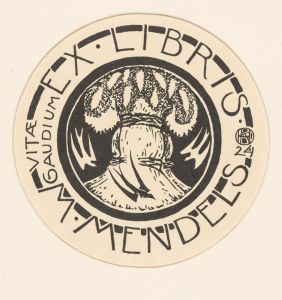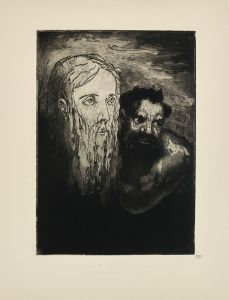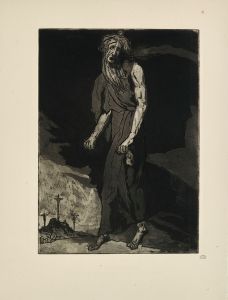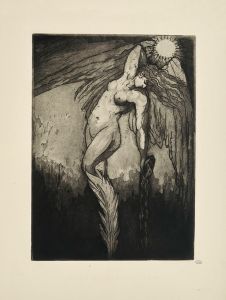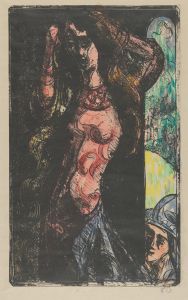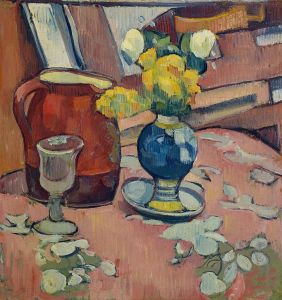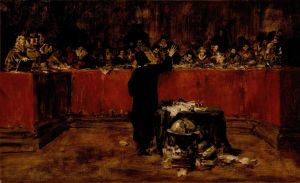
Œuvres de François Villon
A hand-painted replica of Emile Bernard’s masterpiece Œuvres de François Villon, meticulously crafted by professional artists to capture the true essence of the original. Each piece is created with museum-quality canvas and rare mineral pigments, carefully painted by experienced artists with delicate brushstrokes and rich, layered colors to perfectly recreate the texture of the original artwork. Unlike machine-printed reproductions, this hand-painted version brings the painting to life, infused with the artist’s emotions and skill in every stroke. Whether for personal collection or home decoration, it instantly elevates the artistic atmosphere of any space.
"Œuvres de François Villon" is a painting by the French artist Émile Bernard, created in 1919. Émile Bernard was a prominent Post-Impressionist painter and writer, known for his significant contributions to the Symbolist and Cloisonnist movements. Born in 1868 in Lille, France, Bernard was a contemporary of artists like Vincent van Gogh and Paul Gauguin, with whom he shared a close relationship and artistic exchange.
The painting "Œuvres de François Villon" reflects Bernard's interest in literature and his tendency to draw inspiration from literary figures. François Villon, the subject of the painting, was a medieval French poet known for his poignant and often gritty verses. Villon's works, such as "Le Testament" and "Ballade des Pendus," are celebrated for their exploration of themes like mortality, poverty, and the human condition, often reflecting his own tumultuous life.
Bernard's depiction of Villon's works is not merely a portrait but an artistic interpretation that seeks to capture the essence of Villon's poetry. The painting is characterized by Bernard's distinctive style, which often includes bold outlines and a vivid color palette, a technique that aligns with the Cloisonnist approach he helped pioneer. This style involves separating areas of color with dark contours, creating a stained-glass window effect that emphasizes the flatness of the canvas while enhancing the emotional impact of the imagery.
In "Œuvres de François Villon," Bernard may have employed symbolic elements to convey the themes present in Villon's poetry. While specific details of the painting's composition are not widely documented, Bernard's work often includes allegorical and symbolic references, which could suggest an attempt to visually interpret the complex and often somber themes of Villon's writing.
The painting was created during a period when Bernard was deeply engaged in exploring religious and philosophical themes, which may have influenced his interpretation of Villon's oeuvre. Bernard's broader body of work from this era often reflects a synthesis of literary and artistic influences, demonstrating his intellectual engagement with the cultural and historical context of his subjects.
"Œuvres de François Villon" is part of Bernard's extensive exploration of literary themes, which also includes works inspired by other writers and poets. This painting, like many of Bernard's works, showcases his ability to blend literary inspiration with his unique artistic vision, creating a dialogue between text and image that invites viewers to consider the interplay between visual art and literature.
Émile Bernard's contributions to the art world extend beyond his paintings; he was also a prolific writer and theorist, penning essays and critiques that influenced the direction of modern art. His interactions with other artists of his time, including his correspondence with van Gogh and Gauguin, highlight his role in the development of Post-Impressionism and his impact on the avant-garde movements that followed.
Overall, "Œuvres de François Villon" exemplifies Émile Bernard's dedication to exploring the connections between art and literature, offering a visual homage to one of France's most enigmatic poets. Through this painting, Bernard not only celebrates Villon's literary legacy but also reinforces his own position as a key figure in the dialogue between different artistic disciplines.








